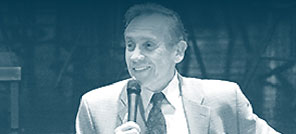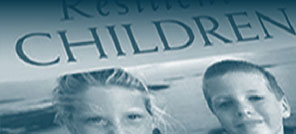We are very happy that you like sharing articles from the site. To send more articles to your friends please copy and paste the page address into a separate email.Thank You.
Printer-Friendly Version | Email Article
 I keep a stack of articles in my study. They cover themes I’ve found of great interest. Many pertain to topics I consider addressing in one of my monthly columns. As I was recently reviewing several of these articles, one especially caught my attention. It was based on an interview on NPR conducted by Rhitu Chatterjee with Dr. Gillian Sandstrom, a psychologist at the University of Sussex in Great Britain. It had the intriguing title, “Why a Stranger’s Hello Can Do More than Just Brighten Your Day.”
I keep a stack of articles in my study. They cover themes I’ve found of great interest. Many pertain to topics I consider addressing in one of my monthly columns. As I was recently reviewing several of these articles, one especially caught my attention. It was based on an interview on NPR conducted by Rhitu Chatterjee with Dr. Gillian Sandstrom, a psychologist at the University of Sussex in Great Britain. It had the intriguing title, “Why a Stranger’s Hello Can Do More than Just Brighten Your Day.”
Chatterjee wrote that prior to Sandstrom enrolling in a Master’s program in psychology at Ryerson University in Toronto, followed by a doctoral program in psychology at the University of British Columbia, she was employed as a computer programmer. Sandstrom recalled that at Ryerson she was 10 years older than most of the other students in her program and didn’t “instantly feel like a part of that community.” As she walked each day from one university building to another, she passed a woman selling hot dogs. This brief daily interaction, as she noted on her bio on the University of Sussex website, inspired her to study the impact of “interactions with weak ties.”
Sandstrom described, “I never bought a hotdog, but every time I walked past, I would smile and wave at her and she’d smile and wave at me.” Sandstrom remembered looking forward to this brief interaction and it made her feel less isolated. She explained, “She made me feel happy. I felt better after seeing her and worse if she wasn’t there. This relationship got me thinking about how we have so many people in our lives. We’re only close to a small number of them, but all of the other people seem to matter a lot and maybe a lot more than we realize.”
A Woman Selling Hotdogs: A New Field of Study
This daily brief encounter with the woman selling hotdogs served as a catalyst for Sandstrom to study the impact of interactions that go beyond close family and friends. In discussing Sandstrom’s studies, Chatterjee wrote, “While much of the research on social connections has focused on the closest relationships in people’s lives, Sandstrom and other scientists are now learning that even the most casual contacts with strangers and acquaintances can be tremendously beneficial to our mental health.”
In one study, Sandstrom found that people who had more conversations with so-called “weak ties” tended to be happier than individuals who had fewer of these interactions daily. In addition, they were happier on the days they had more of these interactions than when such interactions were absent.
In another study Sandstrom and her colleagues recruited 60 people outside a Starbucks in Vancouver, Canada. They gave each participant a Starbucks gift card. They randomly assigned one-half of the group to be “as efficient as possible when placing their order,” basically advising them to refrain from “small talk” with the staff. They requested the half of the group to be more social with the barista, instructing them, “So try to make eye contact, smile, have a little chat, try to make it a genuine social interaction.”
After purchasing their coffee, the participants were asked to go to another researcher outside who was unaware of which group the person had been assigned. This researcher had them complete a questionnaire about their current mood and how much they had interacted with the barista. They found that those who chatted with the barista were in a better mood than those who had not. It was also reported that they “felt a greater sense of belonging than those who didn’t interact much with the staff.”
Sandstrom observed, “I think lots of people, if they think about it, can tell a story like that about a time where someone that they didn’t know at all or didn’t know well just really made a difference by listening or smiling or saying a couple of words.” Chatterjee added, “Other research shows that it’s not just talking to strangers and acquaintances that makes us happy but the entire suite of our daily interactions with both weak and strong ties.”
Chatterjee also referenced a study undertaken by Hanne Collins, a graduate student at Harvard Business School, involving data from eight countries. Collins and her colleagues found that in all of these countries people reported that daily interactions with different people such as “strangers, acquaintances, friends, family, colleagues,” contributed to feeling happier than those who conversed with only colleagues or friends. Collins proposed that being engaged in even brief interactions with “lots of people might build the sense of community and belonging to a larger social structure.” Obviously, if these interactions were to reinforce a sense of belonging, they had to be positive in nature.
In my research for this month’s column, I discovered there were many articles written about the beneficial impact of saying hello to strangers. As one example, Tina Bernstein began a blog with a well-known quote by Maya Angelou: “I’ve learned that people will forget what you said, people will forget what you did, but people will never forget how you made them feel.”
Bernstein cited studies in London and Chicago that found that individuals who were asked to speak with other passengers on public transportation felt more positive about their ride than those who didn’t speak with others. Bernstein shared ideas of how to start talking with a stranger such as saying “hello to a doorman, a street sweeper, a homeless person. It makes such a difference. I notice how people smile. It’s a tiny little human thing that can have such a ripple effect.”
Jeffrey Pillow, a short story writer and blogger described in one of his pieces, titled “The Kindness of Strangers: A Simple Greeting Can Brighten Someone’s Day,” an experience many of us who jog have had. “When I go for a run each day, one of the best parts—apart from the natural stress reduction and physical health benefits running provides—is the nonverbal connection with other runners via the ‘runner wave’ as I like to call it. The runner wave isn’t a full-on hand wave but a quick hello with the hand as you pass a runner headed in the opposite direction.”
Pillow reflected, “For me, it’s almost a tethered connection, albeit invisible, taking place between two beings out there on the trail—an unspoken bond, a mutual indication of ‘hey, I see you out here doing your thing, keep it up.’”
A question can be raised about several of the studies discussed in this article. Does speaking with or acknowledging a stranger, even with just a head nod, make us happier or are happier people more likely to initiate the interaction in the first place? While some studies may not answer this question, I believe many clearly indicate that brief interactions with strangers reinforce positive emotions whether we are already happy or not. For instance, in the research that involved speaking with the barista at Starbucks, the participants were randomly selected and randomly assigned to one of the two conditions. Those who had even a brief positive interaction with the barista were happier immediately afterward than those who bought their coffee with little interaction.
Applying the Research to Our Daily Lives
Perhaps a more important question to pose is: “How do we use the findings of these studies to improve our own lives?” Chatterjee wrote that these small encounters “might serve as a guide for those who don’t typically engage in conversations with lots of folks—and who fall into the cohort of people suffering from what the U.S. Surgeon General categorizes as ‘social isolation.’”
I assume that most of my readers can recall a time they had a memorable brief interaction with a stranger or someone they didn’t really know very well that brightened their day. When I read Sandstrom’s account of the impact of the woman selling hotdogs, I immediately recalled an experience at a Dunkin’ (formerly Dunkin’ Donuts—a very popular brand here in New England) store where I bought my coffee each morning on my drive to McLean Hospital. The same woman served me for several years, always with a smile. A nice start to the day!
This past fall I was shopping at my local pharmacy. One of the staff was consistently helpful and always with a smile. I thanked her for her help and simply said, “I hope you always keep that smile.” She replied, “Thank you so much for saying that.” While at the same store this week, a shopper approached me and asked, “Were you on TV years ago?” I was quite surprised by her question since I last appeared as a regular guest on two TV shows in the Boston area nearly 40 years ago. I’m not certain she even remembered my name. I introduced myself and she did the same. She complimented me on my work. I responded, “Thanks for coming over to speak with me. You made my day!”
Another observation. Interactions need not always be in person. I like to send complimentary notes—in these days often via email—to other speakers I have heard or whose articles or books I have read. I know how positive I feel both when I receive a note of appreciation and when I send a thank you note in response. Similarly, I once read an article written by a physician who said that he often “prescribed” that his patients engage in social interactions regardless of how short or long they are, to improve their physical and emotional well-being.
I understand that some people are more introverted than others, and in response to reading this article, they might think, “I wouldn’t know where to start in terms of interacting with others.” I appreciate this viewpoint, but it’s important to recognize— as the research strongly indicates— that even a nod of the head or a wave of the hand can enrich the lives of both the sender and recipient of what I have often called “seemingly small gestures.” I have long advocated beginning with small steps as we attempt to make positive changes in our lives with each small success leading to larger gains.
Concluding Thought
We live in a polarized, divisive world, one that has separated rather than brought people together, one that has led to mistrust rather than trust, and one that has contributed to an increase in anxiety, depression, loneliness, and other mental health issues. Based on the research undertaken by Sandstrom and others, I suggest we reflect on times in which a small gesture by a stranger improved our mood and also on times in which we initiated positive gestures that made us and the recipient happier. A smile, a warm greeting, or a thank you should not be seen as unimportant behaviors but rather as impactful actions that can enrich our lives and the lives of others.



